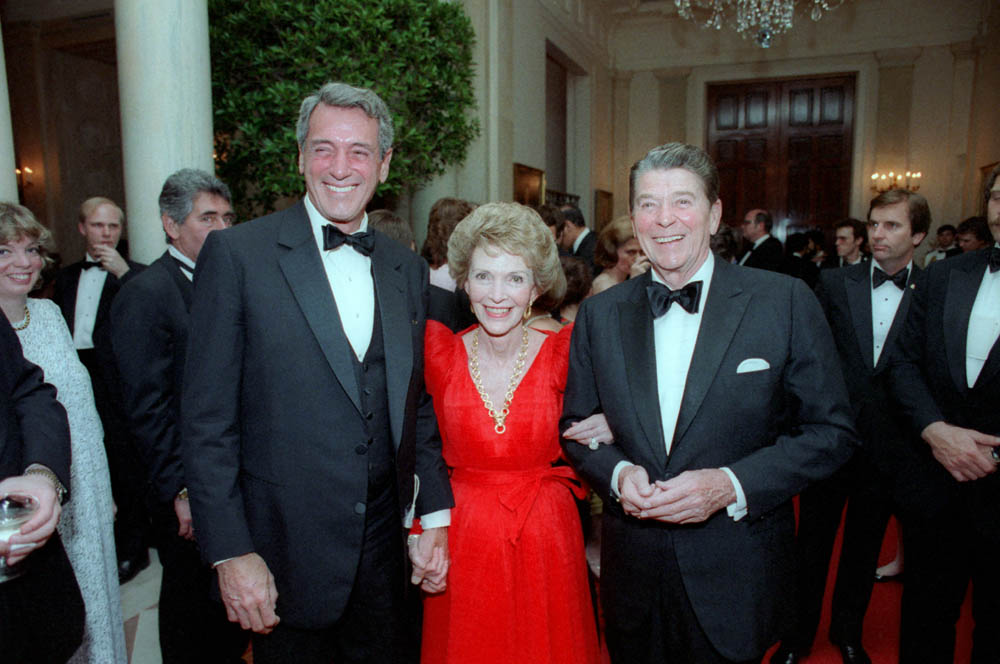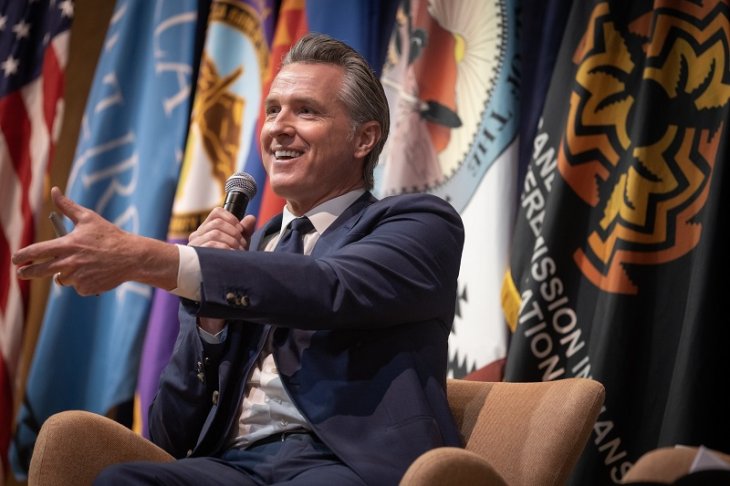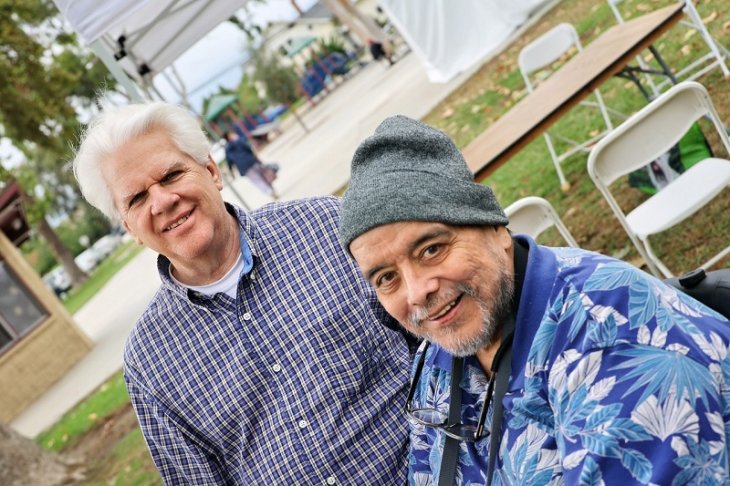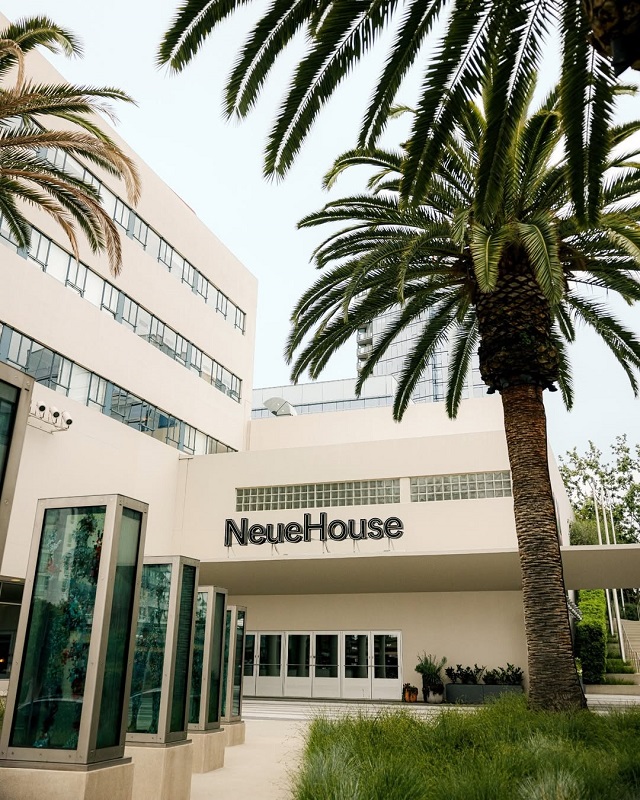
BY KAREN OCAMB | On June 5, 1981, the Centers for Disease Control published an article entitled “Pneumocystis Pneumonia” written by Los Angeles-based Dr. Michael Gottlieb and Dr. Joel Weisman about a mysterious new disease in five gay men in the L.A. area.
That paper marked the official recognition of what became the AIDS pandemic. By August 1981, the CDC reported 108 cases of the new disease in America; six months later, the CDC reported that 251 people had what became known as HIV/AIDS and 99 had died. By the end of 2014, the World Health Organization reported that 71 million people were infected with HIV globally and 34 million had died.
But new medications promise the once unthinkable end of AIDS in our lifetime.
“Over these 35 years, American ingenuity and leadership has shaped the world’s response to this crisis,” said President Obama in a message noting the anniversary. “While there is more work to do – the economically disadvantaged; gay and bisexual men, especially those who are young and Black; women of color; and transgender women all continue to face huge disparities – I’m confident that if we build upon the steps we’ve taken, we can finish the job.”
How different the response was in the early 1980s under President Ronald Reagan, who wouldn’t even help out his close closeted Hollywood gay friend, Rock Hudson.
Ironically, Hudson was diagnosed with HIV on June 5, 1984, three weeks after attending a state dinner at the White House. The actor died Oct. 2, 1985, prompting an explosion of media coverage that gave AIDS “a face.”
With a financial stipend from Hudson, his friend Elizabeth Taylor joined forces with Gottlieb and Dr. Mathilde Krim to raise money for AIDS research and support for people with HIV/AIDS. Five years ago, Gottlieb wrote about that time for LGBT POV, reprised here.
– Karen Ocamb

Dr. Michael Gottlieb on Rock Hudson, Elizabeth Taylor and AIDS at 30
DR. MICHAEL GOTTLIEB | It is not easy for young people to imagine what HIV/AIDS was like in the ‘80s and ‘90s. Thirty years ago, my colleagues and I were the doctors who identified AIDS as a new disease.
Two years later, French researchers found HIV, the virus that caused the immune deficiency.
Fear turned to terror and to sadness, and hundreds of thousands died in the United States alone.
In Los Angeles, special immune-suppressed wards in hospitals were filled to capacity, with young men dying miserably with horrible and disfiguring opportunistic diseases.
At first, when case numbers were small, America ignored AIDS. Next, it was pigeonholed as a “gay disease,” important only to “those” people. There was no sign of a compassionate response.
Institutions struggled with how—or even whether—to respond.
In the prologue to his book And the Band Played On, the late author Randy Shilts wrote, “In those early years, the federal government viewed AIDS as a budget problem, health officials saw it as a political problem, gay leaders considered AIDS a public relations problem and the news media regarded it as a homosexual problem that wouldn’t interest anybody else.”
AIDS flew below the radar until a movie star, my patient Rock Hudson, came down with it in 1985—by which time 12,000 cases had been diagnosed. Until then, most Americans were only vaguely aware that an epidemic was underway and that it was serious.
Before Rock Hudson, the media did not consider AIDS to be a legitimate news story deserving coverage. The disclosure of his AIDS diagnosis changed all that.
Randy Shilts wrote, “Rock Hudson riveted America’s attention upon this deadly new threat for the first time, and his diagnosis became a demarcation that would separate the history of America before AIDS from the history that came after.”
The disease that had been subject to widespread indifference finally had a face, and it was that of a Hollywood movie idol. Americans saw someone with AIDS on the covers of Newsweek andPeople.
In 2006, I chuckled when I heard Elizabeth Taylor respond to Larry King’s question on CNN about how she got involved with AIDS. Her answer: “I called a doctor friend of mine, Michael Gottlieb, and said ‘what can I do?’”
As much as I would like to take the credit, the reality was more complicated. Rock and Elizabeth had been friends since the days when they starred in the film Giant, and she had many other gay friends who were already affected by or living in fear of HIV.
She had seen firsthand the devastation of the disease when she visited Rock at the UCLA Medical Center.
Elizabeth was very aware of the injustice of homophobia, and instinctively knew that prejudice explained why AIDS was being ignored. Rock’s diagnosis was a pivotal moment in the epidemic; an opportunity to start up a national foundation to raise awareness and press the government for action. Elizabeth took up the cause and stayed with it for 25 years with characteristic tenacity.
It should be noted that she had the courage to take up the cause at a time when AIDS was very unpopular.
Young people may not be aware that as late as 1987 there was a California ballot proposition that, among other things, would have prohibited HIV-positive patients from working in restaurants. It was endorsed by then-Gov. George Deukmejian and nearly passed.

Elizabeth was the first celebrity AIDS activist to become a public spokesperson when we founded the American Foundation for AIDS Research (AmFAR). Her involvement was a revolutionary event, a game-changer on par with Rock’s disclosure.
And she was perfect in the role.
She was beautiful, eloquent and compassionate in making the case for more federal and private funding for research and care. The adoring public that had followed her career and the ups and downs of her personal life saw how deeply committed she was to justice and compassion for people with HIV/AIDS and started listening. Prejudice toward people with AIDS slowly began to soften and was replaced with at least some degree of empathy.

It was Elizabeth who finally coaxed President Ronald Reagan into finally saying the word “AIDS,” seven years into his presidency.
I traveled with her to Washington to lobby Sens. Orrin Hatch and Fritz Hollings for federal funding.
Although I was the AIDS discoverer and expert, I received absolutely no attention or respect whatsoever from the senators. Elizabeth wowed them with her glamour, good humor and charm. Her star power focused their attention on what needed to be done.
The advances in treatment that we have today are due in no small part to her efforts in promoting research. Other celebrities have generously lent their names to the AIDS cause, but no one will ever come close to her prominence.
When the final chapter in the history of the epidemic is written, Elizabeth Taylor will stand as a heroine above all others.
The HIV epidemic is not over. Despite the improved prognosis, younger generations of gay men should not take contracting HIV lightly. Among other obvious disadvantages, a lifelong requirement for medication has a downside in terms of side effects.
In 2009 alone there were 2.4 million new infections in the world, 1 million of them in the 15-24-age range. (According to U.N. AIDS in 2015 there were 2.1 million new infections worldwide.)
We are actually losing ground; in 2009, two people were newly infected for every one person who started antiviral therapy. Preventive medication, a vaccine and even a cure are the new frontiers of research.
Elizabeth Taylor made HIV/AIDS her cause, and there is a void in our world left by her passing. Inspired by her example and that of many AIDS activists still among us, a younger generation should get involved, focus on prevention and support ongoing efforts to find a vaccine and cure.
























